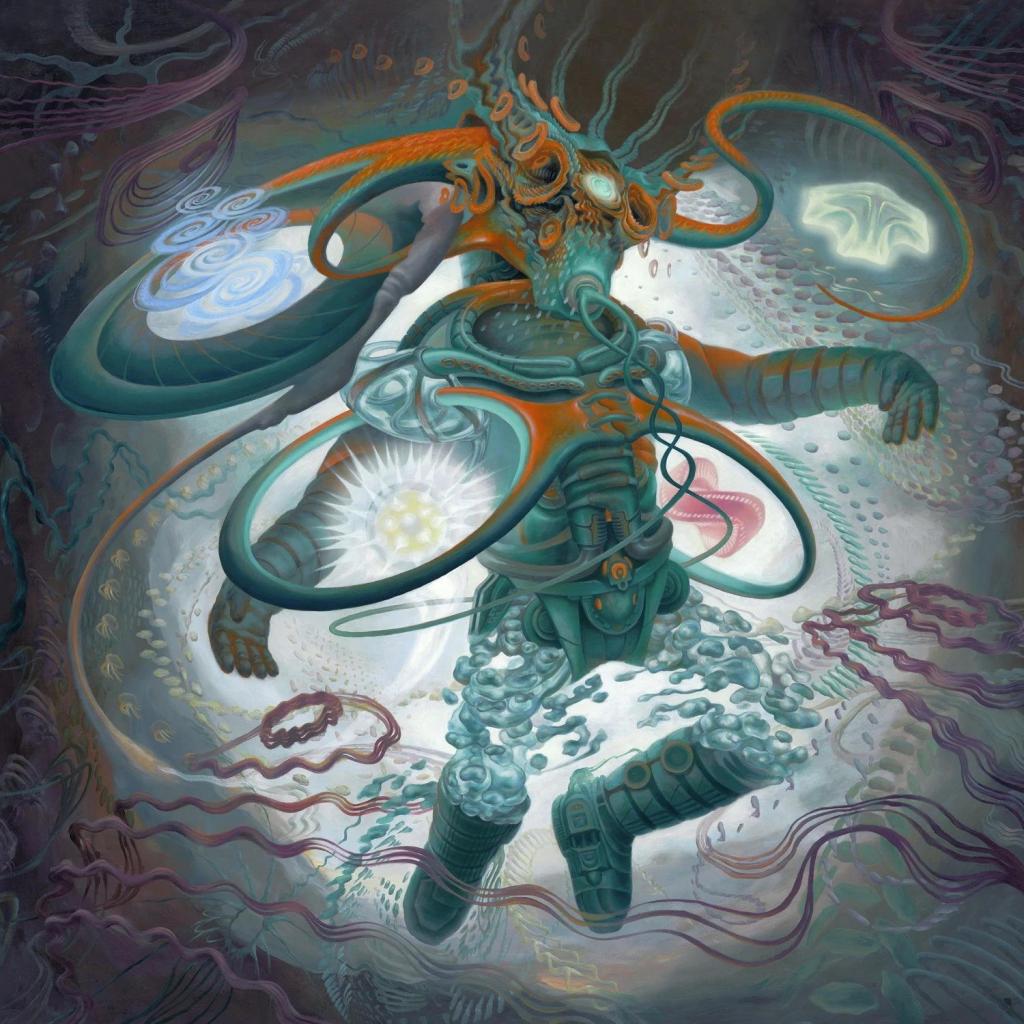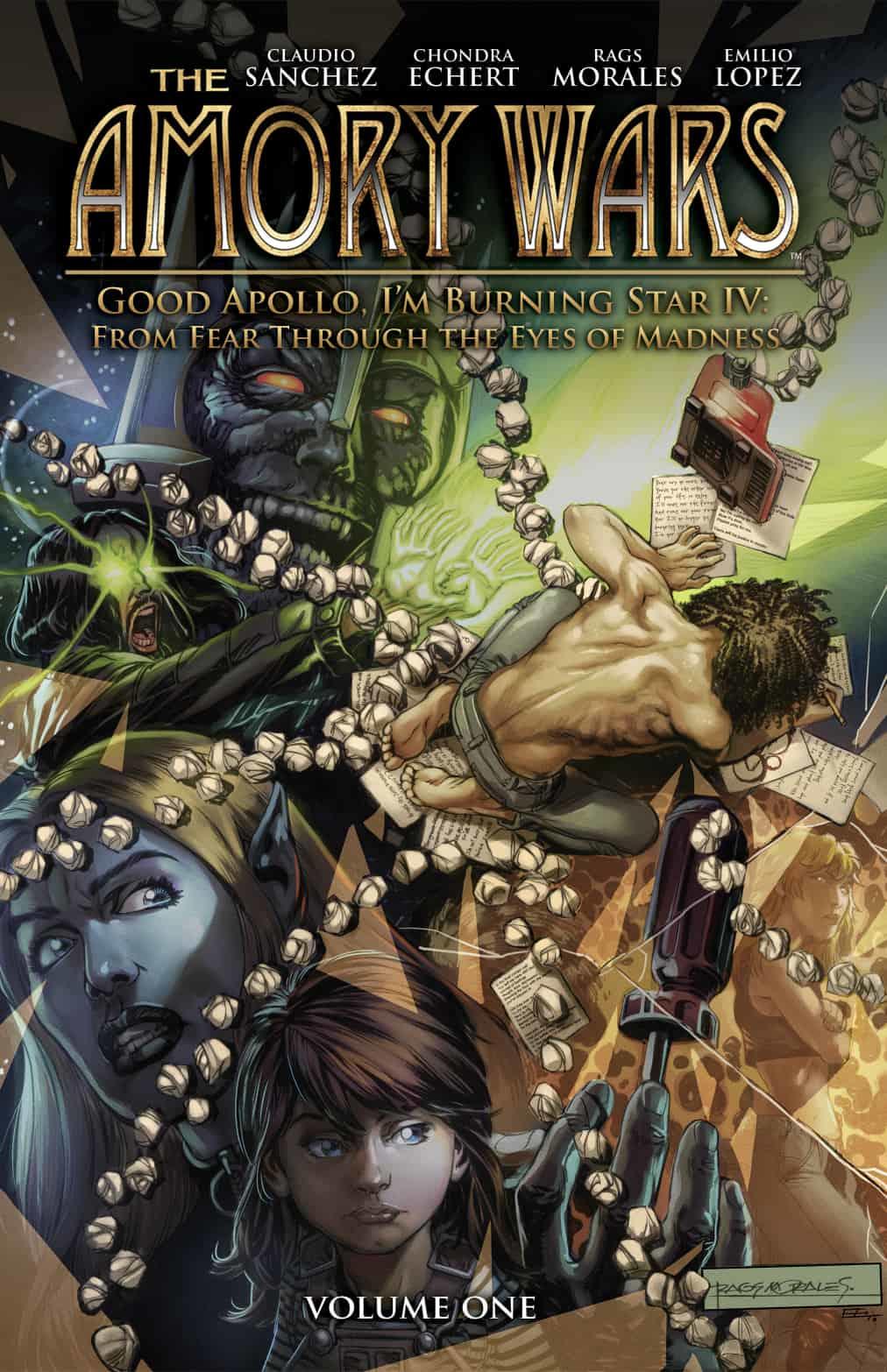Coheed and Cambria are back with their new album Vaxis – Act II: A Window of the Waking Mind, the latest chapter in The Amory Wars saga. Maybe those words don’t mean much to you, or perhaps you’ve been a fan of Coheed and Cambria’s music but haven’t pieced together the space opera concept carried over across all of their albums. We’re here to help. With Vaxis — Act II now available, we’ve put together a guide to help new and old fans discover The Amory Wars’ story. Read on to learn more, and if you aren’t sure if this is of interest to you, go check out some of Coheed’s music and then come back.
Videos by ComicBook.com
If you don’t know, Coheed and Cambria have been around as a band since 1995 and released their first studio album in 2002, featuring the lineup of Claudio Sanchez on vocals and rhythm guitar, Josh Eppard on drums, Michael Todd on bass, and Travis Stever on lead guitar. There have been some lineup changes over the years, and the band’s current lineup sees Zach Cooper on bass in place of Todd.
Vaxis — Act II: A Window of the Waking Mind is Coheed and Cambria’s tenth studio album and the ninth concept album set in the continuity of The Amory Wars. Largely conceived of by Sanchez, the band’s frontman, much of The Amory Wars saga has been adapted into comics and into prose stories included with some of the albums’ vinyl releases. As a space opera, it’s easy to compare it to Star Wars, the preeminent example of the genre in popular culture. In fact, Sanchez recently addressed that comparison in an interview with Guitar World after a record label executive brought it up with him.
“It was a great conversation: ‘What does a new Coheed fan look like coming into this, 20 years into our career,’” Sanchez said. “It must be something not unlike Star Wars. You’re young, you get into The Force Awakens only to find out that there’s this whole mythos for you to go back and [discover]. I was excited when somebody said that to me, because they got it – for a long time nobody got it. This isn’t just about music; this is about a culture that this band has been trying to develop since 2002, but it was just a hard thing for people to swallow [in the beginning].”
What makes it cool? Well, aside from Coheed being a damn fine progressive rock/metal band, their songs are full of killer androids, wizards, and aliens fighting for love and/or power. The basic premise of The Amory Wars is that its story takes place in a region of space called Heaven’s Fence, which consists of 78 planets and seven stars all connected by a mysterious beam of light called the Keywork. After a conflict called The Mage Wars, as the first installment of The Amory Wars begins, a tyrant named Wilhelm Ryan has risen to power as the Supreme Tri-Mage and rules Heaven’s Fence with cruelty. The Keywork’s nature and the origin of Heaven’s Fence are revealed over a saga involving a family struggling to overthrow Ryan.
The similarities to Star Wars are obvious, but there’s more it than that. By the second half of the original Armory War saga, things have gotten metatextual on a Grant Morrison-like level, with the story’s writer becoming a character in the tale.
And let’s not forget about the medium. That this story is told via music rather than visuals makes it distinct even if there are superficial similarities to other entries in the genre. Coheed plays a blend of post-hardcore and progressive metal, with their earlier work leaning more towards the former and the band progressively gravitating towards the latter over time. They also employ a technique called “terminally climactic form” to express moments of chaos or violence. I won’t pretend that I’m well-versed enough in music theory to explain it well, but others have written about its use. In layman’s terms, it’s fun, heavy rock music, and while the term is often overused, Coheed’s material is genuinely epic.
Here’s how The Amory Wars breaks down. While you can pick up any of these albums and enjoy the music, we’ve highlighted some solid jumping-on points for the story:
The Original Amory Wars

The Amory Wars started with Coheed and Cambria’s first studio album, Second Stage Turbine Blade. The album introduces the characters that give the band its name, Coheed and Cambria Kilgannon, a married couple with four children. The story chronicles their tragic and bloody conflict with Wilhelm Ryan.
The second album, In Keep Keeping Secrets of Silent Earth: 3, picks up a decade later. It focuses on Coheed and Cambria’s son, Claudio Kilgannon, as he embarks on a quest for revenge.
The saga concludes with the two albums that form the Good Apollo, I’m Burning Star IV duology: Vol. 1: From Fear Through the Eyes of Madness and Vol. 2: No World for Tomorrow. Both were breakout releases for the band thanks to powerful singles like “Welcome Home” and “The Running Free,” these albums are where the metatextual aspects come into play, as the story’s writer is drawn into the conflict in Heaven’s Fence.
Year of the Black Rainbow

After Good Apollo, I’m Burning Star IV, Coheed and Cambria went back to the beginning of The Amory Wars saga. In interviews, Sanchez explained that, like George Lucas with Star Wars, he hadn’t told the story from the very beginning. Thus, Year of the Black Rainbow serves as a prequel to those original four albums but is also considered by Sanchez to be an essential part of the Kilgannon family’s saga.
Year of the Black Rainbow is set years before Second Stage Turbine Blade. While its main character is Dr. Leonard Hohenberger, a scientist seeking revenge on Wilhelm Ryan, the album serves as an origin story for the Coheed and Cambria characters.
Second Stage Turbine Blade is the place to start if you’re looking to experience The Amory Wars as originally released (or chart Coheed and Cambria’s musical evolution). However, if you want the entire Kilgannon saga in chronological story order, begin with Year of the Black Rainbow.
The Afterman

The Afterman duology is comprised of two albums with the subtitles Ascension and Descension (they’ve also been re-released in a single double-album set). It’s another prequel to Second Stage Turbine Blade, but is set significantly further back in the timeline than even Year of the Black Rainbow and is more of a standalone story set apart from the Kilgannon family’s tale.
The Afterman focuses on Dr. Sirius Amory, the scientist who gives the sci-fi saga its name and is the namesake of the Sirius Stars, those seven stars included in Heaven’s Fence. The story is about Amory’s research into the nature of the Keywork and the startling revelations he discovers when he becomes possessed by beings called “Key Entities.”
If the idea of jumping into an entire five-album saga is a little intimidating, The Afterman will give you something similar in more condensed form. Start with Ascension and then continue onto Descension.
Vaxis

In 2018, Coheed and Cambria returned to The Amory Wars to begin a new saga, Vaxis. The five-part story is set years after the Kilgannons’ journey. The planets of Heaven’s Fence now bear the scars of an event called the “The Great Crash,” and an elite group called the Five Houses of the Star Supremacy has taken control of the region, turning the planets into prisons.
Vaxis – Act I: The Unheavenly Creatures introduced the new saga’s protagonists, two criminals named Nia Worn, a.k.a. Sister Spider, and Nostrand Crane, a.k.a. Creature, both imprisoned on The Dark Sentencer. The album tells their story as they seek safety for their unborn son, Vaxis.
Four years later, Coheed has now released Vaxis – Act II: A Window of the Waking Mind. Sanchez has said that it will pick up with Vaxis born and alive but strangely “catatonic.” The album will also introduce several new characters, including a group called “The Liars Club.” Sanchez also teased that Vaxis’ story is the “axis” upon which the entire Amory Wars saga revolves. It should be an exciting tale for longtime fans.
There are still three albums to go in the Vaxis saga. If you want to get current with Coheed and Cambria’s output, give The Unheavenly Creatures a listen and then A Window of the Waking Mind.
The Prize Fighter Inferno

This is entering deep-cut territory, but if you’re desperate for more of The Amory Wars, check out Sanchez’s solo side project The Prize Fighter Inferno. The music has more of an indie rock vibe to it, so if that’s more your thing than this may be a good place to start.
The Prize Fighter Inferno takes place during the events of the original Amory Wars saga but is told from the perspective of Coheed’s brother, Jesse. Sanchez has said that the project’s story would shed new light on aspects of The Amory Wars, but the exact plans aren’t clear. Thus far there have been three releases: My Brother’s Blood Machine in 2006, the Half Measures EP in 2012, and The City Introvert in 2021.
The Color Before the Sun

And now for something completely different: The Color Before the Sun is the only Coheed and Cambria album not set in The Amory Wars saga. Instead, Sanchez crafted an album about his personal life and feelings about becoming a father around the same time that he lost his own family home, which, thematically, isn’t a far cry from what he deals with in The Amory Wars.
If you are curious about Coheed and Cambria’s music but want something a little more personal and less sci-fi to start with, The Color Before the Sun is a great album to check out. After that, you can pretty much vibe with all The Amory Wars releases on a musical level even if you never do care enough to dig into the sci-fi stuff.
Comics and other adaptations.

As mentioned, most of Coheed and Cambria’s The Amory Wars saga has been adapted into either comics or prose fiction form. The adaptation is incomplete currently, but still in progress.
While there were some early false starts, the current iteration of The Amory Wars adaptation begins with The Amory Wars: The Second Stage Turbine Blade, the 10-issue comic book adapting Coheed and Cambria’s first studio album. Sanchez wrote the series and teamed with several artists, including Gus Vasquez, Mike S. Miller, and Gabriel Guzman. Boom Studios published the “Ultimate Edition” hardcover collecting the entire saga.
Boom then published The Amory Wars: In Keeping Secrets of Silent Earth: 3, adapting Coheed’s second album. Peter David co-wrote the series with Sanchez, enlisting artists including Chris Burnham and Aaron Kuder. Boom has published this series in a collected ultimate edition.
The Amory Wars: Good Apollo, I’m Burning Star IV followed, adapting the third album in the saga. Sanchez and Chondra Echert wrote the series, with art from Rags Morales. Fans are still waiting on the comic book adaptation of the fourth album, No World for Tomorrow, which Sanchez has said is his next comics project.
The prequel and spinoff albums — Year of the Black Rainbow, The Afterman, Vaxis — have feature prose novels or coffee table book-style offerings that lay out each album’s story in prose. They’re typically included with collectors’ editions of the vinyl album releases.
There’s also the possibility of a live-action adaptation, though nothing is currently in the works. Mark Wahlberg once expressed interest in turning the saga into a film franchise. Boom Studios also has a first-look deal with streaming giant Netflix, though it’s unclear if adaptations of Coheed’s output would fall under that deal.
Vaxis II – A Window of the Waking Mind is available now.








